Best USB Microphone for Vocals & Musical Instruments - 2023
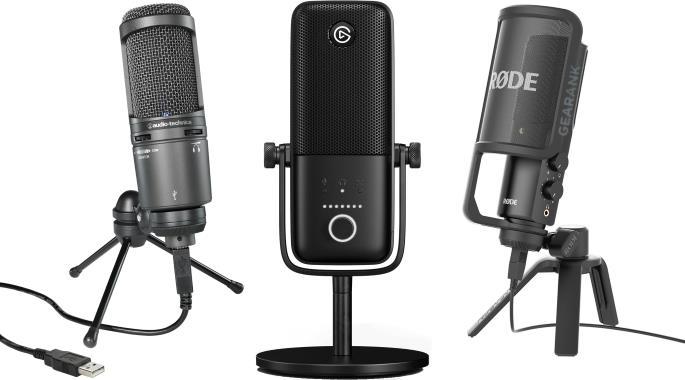
HyperX QuadCast
Cons
- Prone to interference from mobile phones
- Sensitive gain knob
Pros
- Built-in shock mount
- Crisp and clear sound
- 4 Polar patterns
The HyperX QuadCast is a compelling USB microphone designed for users seeking high-quality audio without breaking the bank. Despite its modest technical limitations, it performs exceptionally well for Podcasting, streaming, and other vocal-centric applications, making it a valuable option for those short of professional recording needs. Its signature red lighting not only adds flair but also serves as a clear indicator of your live or mute status.
The HyperX QuadCast boasts a lightweight design with dimensions of 21cm without the stand and 25cm with the stand, weighing 254g without the mount or stand and 364g in total. While it may not have advanced features, it's easy to use and provides clear audio quality for your content.
The microphone's ease of use makes it an ideal standalone mic for streaming and podcasting. Setup is straightforward, but you may need to fine-tune your recording environment to reduce background noise and echoes. The microphone includes features such as a mute button / touchpad for convenience and built-in lighting behind the steel grille for visual cues when you're live. Plus, it doesn't require a pop filter due to its effective pressure spike reduction design. The HyperX QuadCast is compatible with PS4, PC, and Mac systems via USB and offers flexibility in recording patterns. While it may not cater to professional recording, it delivers solid results for content creators, streamers, and podcasters.
If you're seeking an affordable and user-friendly USB microphone that provides excellent audio quality for streaming and podcasting, the HyperX QuadCast is a solid choice. It may not suit professional recording needs, but it offers impressive performance for its price point. Ultimately, the HyperX QuadCast balances quality and affordability, making it a valuable tool for content creators looking to improve their audio setup.
Specifications
- Type: Condenser
- Polar Pattern: Stereo, Omnidirectional, Cardioid, Bidirectional
- Frequency Response: 20 Hz to 20 kHz
- Sampling Rate: 48 kHz
- Bit Depth: 16 bits
- Power Requirements: 5V USB
- Applications: Best used for recording vocals/singing, podcasting and voice-over.
Compatibility
Class Compliant USB; Windows 8.1, Windows 10, and Mac OS X or later; USB 1.0 or 2.0, and 64 MB or more of RAM.
Polar Pattern

| Website | Source | *Rating Value |
| Hardware Canucks | Dmitry49 | 90/100 |
Audio-Technica AT2020USB+ - Best Studio USB Microphone
Cons
- Flimsy desktop mic stand
Pros
- Bright and detailed sound signature
- Great for acoustic guitars vocals
- Good value
The AT2020USB+ is definitely among the best USB mics, especially for vocal recordings. It can also be considered a USB studio microphone for those on a budget. As a USB condenser mic, it offers an excellent balance between brightness and detail, making it a great pick for vocals and instruments. It's one of the best USB mics for vocals available, and its relation to the XLR AT2020 makes it an even more attractive option.
It comes with a headphone jack and zero latency monitoring. This makes it a solid usb microphone for home recording enthusiasts. It is also a soild USB microphone for Podcast and content creators. You get the convenience of USB without sacrificing quality.
However, it's worth noting that the included mic stand is flimsy, so you may want to consider getting a different setup. Overall, this Audio Technica Mic is definitely one of the best budget USB microphones.
Specifications
- Type: Condenser
- Polar Pattern: Cardioid
- Frequency Response: 20 Hz to 20 kHz
- Sampling Rate: 44.1/48 kHz
- Bit Depth: 16 bits
- Maximum SPL: 144 dB
- Power Requirements: 5V USB
- Applications: Recording music, voice-overs, streaming and podcasting.
Compatibility
Class Compliant USB; Windows 8.1, Windows 10, and Mac OS X or later; USB 1.0 or 2.0, and 64 MB or more of RAM.
Polar Pattern

Frequency Response

| Website | Source | *Rating Value |
| Musician Nerd | Editor | 95/100 |
| Tom's Hardware | Phil Iwaniuk | 80/100 |
Elgato Wave:3 - Best USB Microphone for Streaming
Cons
- Not the best value if you're looking for a standalone USB mic without the software
Pros
- Great mic for vocals sung and spoken
- Software mixer a plus for more routing options
- Polished sound fits great in any mix
The Elgato Wave:3 is more than just another USB microphone. It is considered one of the best USB microphones for podcasting, streaming, and singing. Designed with streaming in mind, it includes a software mixer to adjust the levels of specific applications and chat.
It was developed in partnership with Austrian mic brand Lewitt. Those familiar with Lewitt's sound signature will appreciate its polished sound straight from the mic.
The mic has a single dial that enables control over input gain and headphone volume. It also lets you crossfade between computer output and direct monitoring. This is particularly useful for singers who prefer to monitor themselves on headphones, as they record vocals.
The Elgato Wave:3 produces a natural sound that is almost "broadcast ready" or "mix ready". Thanks to its slightly boosted upper frequency that never sounds brittle or brings out nasty resonances in voices.
To maximize its potential, the included software should be used. However, it can also function as plug and play but at the expense of its features.
If you're a singer, instrumentalist, or voice-over artist who streams or wants to stream, the Elgato Wave:3 is a great option. It is also great for recordings, . It is considered as one of the best USB condenser mics and best cheap USB microphones available on the market.
Specifications
- Type: Electret Condenser
- Polar Pattern: Cardioid
- Frequency Response: 70 - 20000 Hz
- Sampling Rate: up to 96 kHz
- Bit Depth: up to 24 bits
- Maximum SPL: 120dB (140dB Clipguard engaged)
- Power Requirements: 5V USB
- Applications: Primarily streaming but surprisingly good for sung vocals and voice overs.
Compatibility
Class Compliant USB; Windows 8.1, Windows 10, and Mac OS X or later; USB 1.0 or 2.0, and 64 MB or more of RAM.
| Website | Source | *Rating Value |
| Latest In Tech | Editor | 90/100 |
| Tweak Town | Jak Connor | 98/100 |
Rode NT-USB - Best USB Microphone for Singing
Cons
- May be too warm or neutral for some sound sources
Pros
- Great, warm sound signature
- Good build quality
- Includes useful accessories
If you're looking for the best USB microphone for vocals, the Rode NT-USB is a strong contender. It's part of Rode's flagship line of condenser microphones. It is designed specifically to maintain the company's pedigree sound in a USB recording solution.
The Rode NT-USB includes a pop filter and a 3.5mm headphone jack for zero latency monitoring. It also has a mix knob and volume knob for monitoring adjustments. It has a warm midrange sound signature and smooth high frequency range. It sounds similar to the newer Rode NT1 XLR mic, which is known for its tonality that sounds close to a Neumann U67. This makes it a great USB microphone for singers.
In terms of build quality, the mic itself feels solid and the included pop filter does a good job of mitigating plosives. Microphone signal and recording quality are really good. The neutral/warm sound signature works great for voice overs and sung vocals that need a more vintage touch. It also pairs perfectly with brighter sounding acoustic guitars.
While there was a previous compatibility issue with Skype, it has since been addressed. The only potential downside might be that the sound signature might not work well for darker sounding acoustic guitars. This is also not ideal if you want airy high-end sheen on vocal recordings.
Overall, the Rode NT-USB is a great pick for those who want the best USB mic for vocals and for recording musical instruments. It's a top quality recording microphone that's perfect for podcasting, singing, and recording with a USB microphone.
Specifications
- Type: Condenser
- Polar Pattern: Cardioid
- Frequency Response: 20 Hz to 20 kHz
- Sampling Rate: 48 kHz
- Bit Depth: 16 bits
- Maximum SPL: 110 dB
- Power Requirements: 5V USB
- Applications: Best used for recording vocals/singing, podcasting and voice-overs as well as recording acoustic instruments - mainly guitar.
Compatibility
Class Compliant USB; The NT-USB is a “Plug & Play” USB device, compatible with both Windows and Mac computers, as well as the Apple iPad via the USB camera connection kit.
Polar Pattern
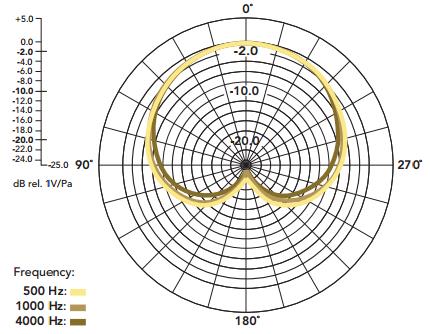
Frequency Response

| Website | Source | *Rating Value |
| MusicRadar | Trevor Curwen | 90/100 |
| Sound On Sound | Paul White | 96/100 |
Shure MV7 - Best USB Microphone for Podcasting
Cons
- Not exactly a USB version of an SM7b
- Still uses a Mini USB cable
Pros
- Relatively uncommon Dynamic USB and XLR mic
- Great sound and build quality
- Can handle aggressive vocal styles easily
Looking for the best USB mic for vocals or recording on your computer? The Shure MV7 is a fantastic option to consider. Inspired by the legendary Shure SM7B broadcast microphone, the MV7 is a hybrid USB/XLR mic that is designed to deliver that coveted "SM7B" sound without the need for expensive additional equipment.
Featuring Shure's proprietary Voice Isolation Technology and customizable sound signatures, the MV7 allows you to tailor the microphone to suit your individual voice. While it may not sound exactly like the SM7B, the MV7 has its own unique sound that many people prefer. In fact, it can be considered a bit more "mix ready" than its more expensive sibling.
One of the benefits of the MV7 is that it is a dynamic microphone, which means it can handle aggressive vocals without distortion. Audio quality remains good as long as volume control and gain staging is set properly. Additionally, the hybrid USB/XLR design offers versatility for those who may want to upgrade to an audio interface setup in the future.
While the marketing material may suggest that the MV7 is simply a USB version of the SM7B, it's important to note that they are actually different microphones with similar sound signatures. That being said, the MV7 is a fantastic microphone in its own right, especially if you're looking for a USB studio microphone or a USB microphone for singing or podcasting.
This mic has XLR and USB outputs. It would've been nice if it had a USB C connection or Micro USB. Do note that while it does include a usb cable, it does not include an XLR cable.
Specifications
- Type: Dynamic
- Frequency Response: 20Hz-20kHz
- Polar Pattern: Cardioid, Bidirectional, Omnidirectional, Stereo
- Sampling Rate: 48 kHz
- Bit Depth: 16 bit
- Applications: Podcasting, vocal recording, streaming
Compatibility
Class Compliant USB; Mac OS 10.13 or later; iOS 12 or later; Windows 10; Android 8 or later.
Frequency Response
| Website | Source | *Rating Value |
| MusicRadar | Chris Corfield | 95/100 |
| Sound On Sound | Paul White | 96/100 |
Frequently Asked Questions When Buying A USB Microphone
- The main difference, which is true of both condenser and dynamic mics, is that USB mics have a built in A/D (Audio to Digital) converter which means that you don't need audio interfaces to digitize the signal from the mic.
There is another important difference with condenser mics. USB condenser mics have a built in preamp that can't be bypassed. Most preamps supply phantom power to operate condenser mics which is usually between 12V and 48V. Because USB only provides 5V this means the mic has to be specially designed to work at this reduced voltage level. For these reasons a USB and XLR version of the same mic may sound perceptibly different - so much so that some audio engineers and home recording enthusiasts prefer not to use USB mics at all, although their numbers have declined as USB mics have improved significantly in recent times. You'll also have to use XLR mics if you want to use iPad Audio Interfaces.
- If you are going to be recording singers or acoustic guitar then a Condenser Microphone will give a sound that's closer to the traditional 'studio condenser mic'. Dynamic mics tend to be a little more robust and so are good for outside recording. Dynamic mics are also the type traditionally used by radio announcers and is the key to getting that polished "broadcast" sound.
What are the differences between USB and XLR mics?
Condenser or Dynamic?
What Polar Pattern should I Use?
Polar patterns defines the directivity of mics, it is usually shown in a graphical form that shows which directions the mic is more sensitive to. The most commonly used for computer based recording is the Cardioid polar pattern. USB mics usually come equipped with switchable pickup patterns, so you will have more options like figure-8, omni-directional and others.
What is Zero Latency Monitoring?
Can I connect a USB microphone to my smartphone or tablet?
Can I use a USB microphone for recording vocals?
Can I use a USB microphone for live performances?
Do USB microphones need phantom power?
Can I use a USB microphone with GarageBand or other recording software?
How do I improve the sound quality of my USB microphone recordings?
Best USB Microphone for Vocals Selection Methodology
The first edition was published in 2016. The current edition was published on October 19, 2023.
For this edition, we looked at all USB Mics currently available at major online stores in the USA across all price ranges. Based on their popularity and amount of reviews, we then narrowed the list down and collected information about those mics from experts, customer reviews and forum discussions. From our initial short-list of 49 mics, we gathered over 198,100 review and rating sources. These rating sources were then processed by the Gearank Algorithm to produce rating scores out of 100 for each mic. This process enables us to choose the top rated mics to recommend. You can see most of the short-listed mics in our Music Gear Database. For more information about our methods see How Gearank Works.
About the Author and Contributors
Here are the key people and sources involved in this guide's production - click on linked names for information about their music industry backgrounds.
Lead Author & Researcher
Raphael Pulgar
I've been an audio engineer for 20 years specializing in rock and metal recordings. I also play guitar and produce original music for my band and other content creators.
Some of the recording gear I use in my studio includes the Focusrite Scarlett 18i20, Focusrite Scarlett Solo, Samson QH4 Headphone Amp and Cloudlifter CL-1. My mics include Aston Origin, Aston Element, Shure SM57, Rode NT1, Rode PodMic and MXL V67G.
Contributors
Jerome Borillo & Alden Acosta: Product research.
Jason Horton: Editing and Illustrating.
Alexander Briones: Editing.
Media
Main/Top Image: Created by Gearank.com using photographs of the Audio-Technica AT2020USB+, Elgato Wave:3 and Rode NT-USB.
The individual product images, frequency response charts and polar pattern charts were sourced from their respective manufacturers' websites, promotional materials or supporting documentation.



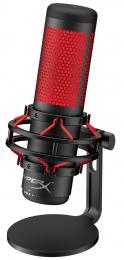
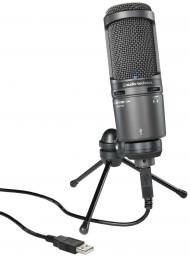
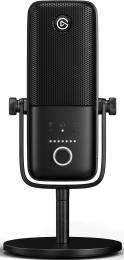
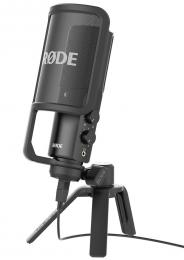
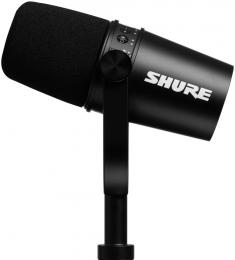
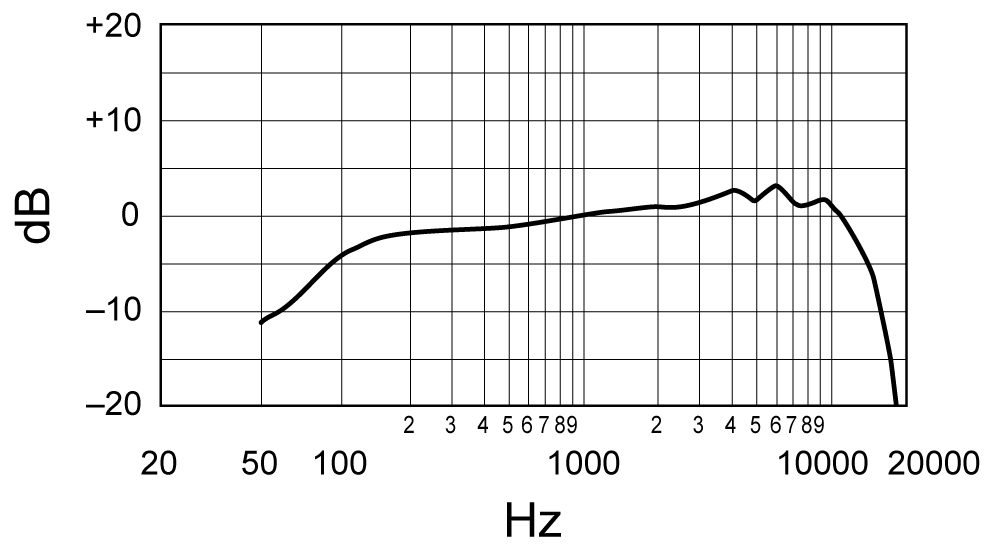
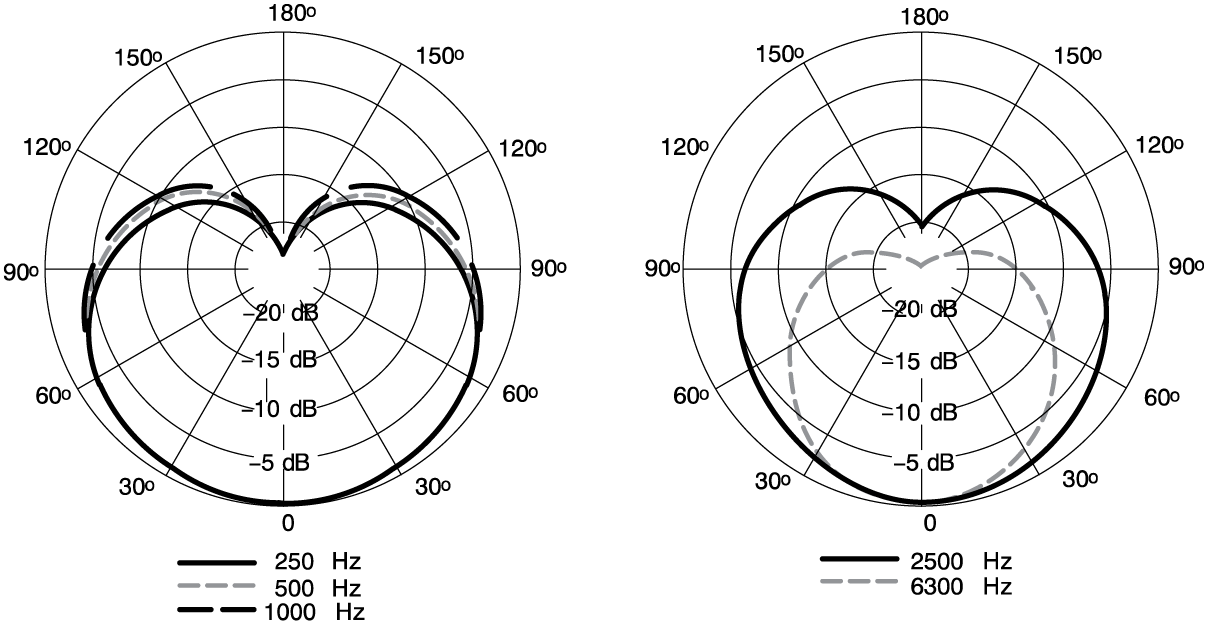
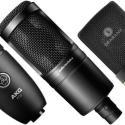
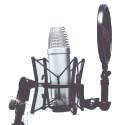
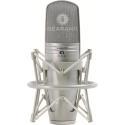

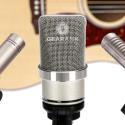
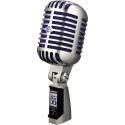
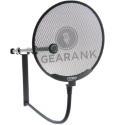
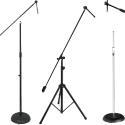
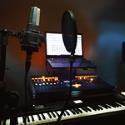
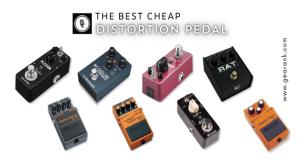

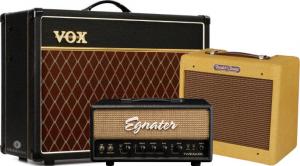
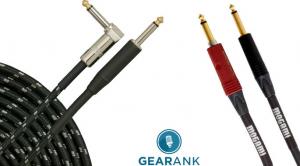
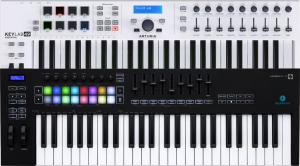
Comments
Great information on the
Submitted by Avee (not verified) on
Great information on the microphones and reviews,I found it very useful. I now know which microphone I will need for my work,thank you!
The following mics came off
Submitted by Jason Horton on
The following mics came off our recommended list when we published the November 2022 Edition:
Publication of our February
Submitted by Jason Horton on
Publication of our February 2022 Edition resulted in the following mic coming off the recommended list above: Mackie EM-91CU.
What's the best USB mic for
Submitted by Darren (not verified) on
What's the best USB mic for use with an iMac and garage band for velvety vocals but also occasional Trumpet recording? Thanks
The publication of our March
Submitted by Jason Horton on
The publication of our March 2021 edition resulted in the following mics coming off the recommended list above, but you can still see our analysis of them:
Great review! I am looking
Submitted by Lou (not verified) on
Great review! I am looking for some advice on a microphone that would be good to pick up the voice of a few people in a garage while teaching a martial arts class, yet also have the ability to produce good audio for webcasts, zoom and the like. So, omnidirectional and cardiod multicapsule?
Good Day Lou,
Submitted by Raphael Pulgar on
Good Day Lou,
Portability and versatility seem to be your top priorities so the Blue Yeti Nano would be a great pick for a compact, portable microphone with omnidirectional pickup capabilities.
-Raphael
Hey, thanks so much for
Submitted by N (not verified) on
Hey, thanks so much for putting together a list that is compiled in this way. Will you be updating this list soon?
We haven't decided yet when
Submitted by Jason Horton on
We haven't decided yet when the next update will be.
The following mics came off
Submitted by Jason Horton on
The following mics came off our recommended list above due to the June 2020 update:
Thank you for this post. Out
Submitted by Jan (not verified) on
Thank you for this post. Out of the hundreds of sites that I browsed(still have 60 tabs open on my phone's browser) this post helped me make my decision and gave a perfect breakdown of the microphones that I was considering. Keep up the great work. I'll definitely be following @gearank for other reviews and info.
Glad we were able to help.
Submitted by Jason Horton on
Glad we were able to help.
For anyone interested, you can get updates by following us on Twitter @GearankMI.
As a result of our April 2019
Submitted by Jason Horton on
As a result of our April 2019 update the following mics came off our recommend list above, but you can still read our analysis of them at:
As a result of our 2017
Submitted by Jason Horton on
As a result of our 2017 update the following mics are no longer recommended in this guide, but you can still read about them: